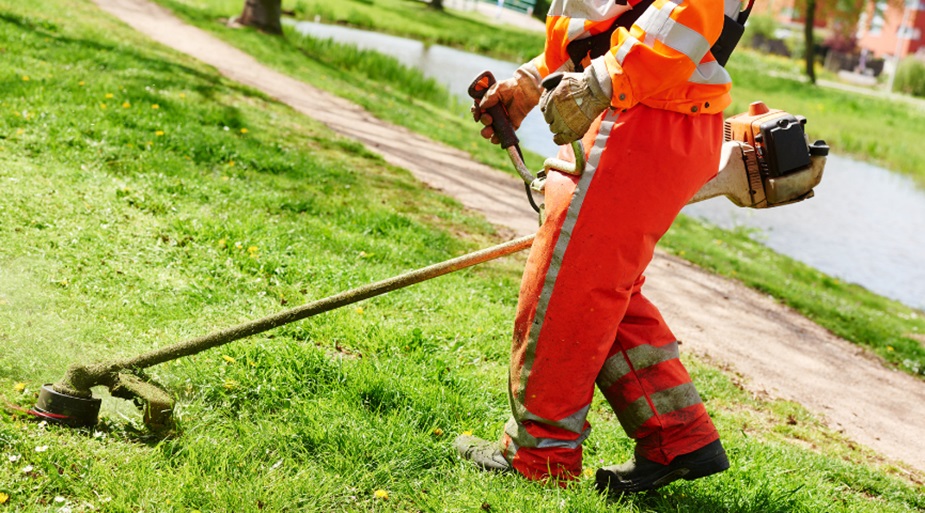
A vibrant, green lawn is an essential aspect of any home, yet maintaining its health can be challenging, particularly when dealing with common lawn diseases. For those interested in lawn maintenance in Suwanee, understanding how to prevent and treat these issues is crucial to keeping your grass healthy and vibrant.
Identifying Common Lawn Diseases
Lawn Rust
Lawn rust is a prevalent fungal disease that manifests as yellowish-orange powder on the blades of grass. This disease is often seen during warm, humid weather and can weaken the grass, making it more susceptible to other stresses. For a comprehensive guide on managing this issue, consider reading this article.
Brown Patch
Brown patch is another fungal disease that causes circular brown patches on the lawn. It thrives in hot, humid conditions, often affecting cool-season grasses. Implementing proper watering and mowing techniques can effectively prevent this disease while promoting optimal air circulation around the turf.
Dollar Spot
Dollar spots appear as small, silver dollar-sized patches on the lawn and are caused by a fungal infection. This disease is prevalent when a combination of high humidity and low soil moisture is combined. Maintaining proper fertilization and watering schedules can help reduce the incidence of dollar spots.
Preventive Measures
Proper Watering Practices
Consistent and appropriate watering is essential in preventing lawn diseases. Water your plants deeply but infrequently to promote robust root growth and decrease the risk of disease. The ideal time to water is early morning, as this allows the grass to dry throughout the day, thereby minimizing the likelihood of fungal growth.
Regular Mowing
Regular mowing at the right height helps prevent lawn diseases. Keep mower blades sharp to avoid tearing grass, which can invite pathogens. Don’t cut more than one-third of the grass blade at a time to reduce stress.
Fertilization
A balanced fertilization program provides essential nutrients that strengthen the grass and improve its disease resistance. Conduct a soil test to determine the specific needs of your lawn and apply fertilizers accordingly.
Treatment Options
Fungicides
In cases where lawn diseases are severe, fungicides may be necessary. These chemical treatments can effectively control fungal infections when applied correctly. Following the manufacturer’s instructions and applying fungicides at the first sign of disease is essential for the best results.
Cultural Control Methods
Improving air circulation and reducing thatch buildup can help manage lawn diseases naturally. Aerate the lawn to alleviate compaction and promote healthy root growth. Thatch removal allows water, nutrients, and air to penetrate the soil more effectively.
Regular Lawn Care Schedule
Adopting a weekly checklist for lawn care can ensure that preventive measures are consistently applied, reducing the likelihood of disease outbreaks. This routine should include checking for signs of disease, adjusting mowing height, and managing irrigation.
Conclusion
Maintaining a healthy lawn in Suwanee requires a proactive approach to prevent and treat common lawn diseases. Homeowners can enjoy a lush, resilient lawn by understanding the signs of disease, implementing best practices for lawn care, and utilizing appropriate treatments. Regular monitoring and maintenance are vital in preventing diseases and ensuring the long-term health of your turf.
Frequently Asked Questions
1. How often should I water my lawn to prevent diseases?
Watering should be done deeply but infrequently, ideally once or twice weekly. Early morning watering allows the grass to dry out during the day.
2. Can lawn diseases be treated without chemicals?
Cultural control methods such as proper mowing, aeration, and thatch removal can help manage lawn diseases without chemicals. However, severe cases might require fungicide treatment.
3. What is the best mowing height for preventing lawn diseases?
The ideal mowing height depends on the grass type but generally should range between 2.5 to 3.5 inches. Keeping the mower blades sharp and avoiding cutting more than one-third of the blade height is crucial.
